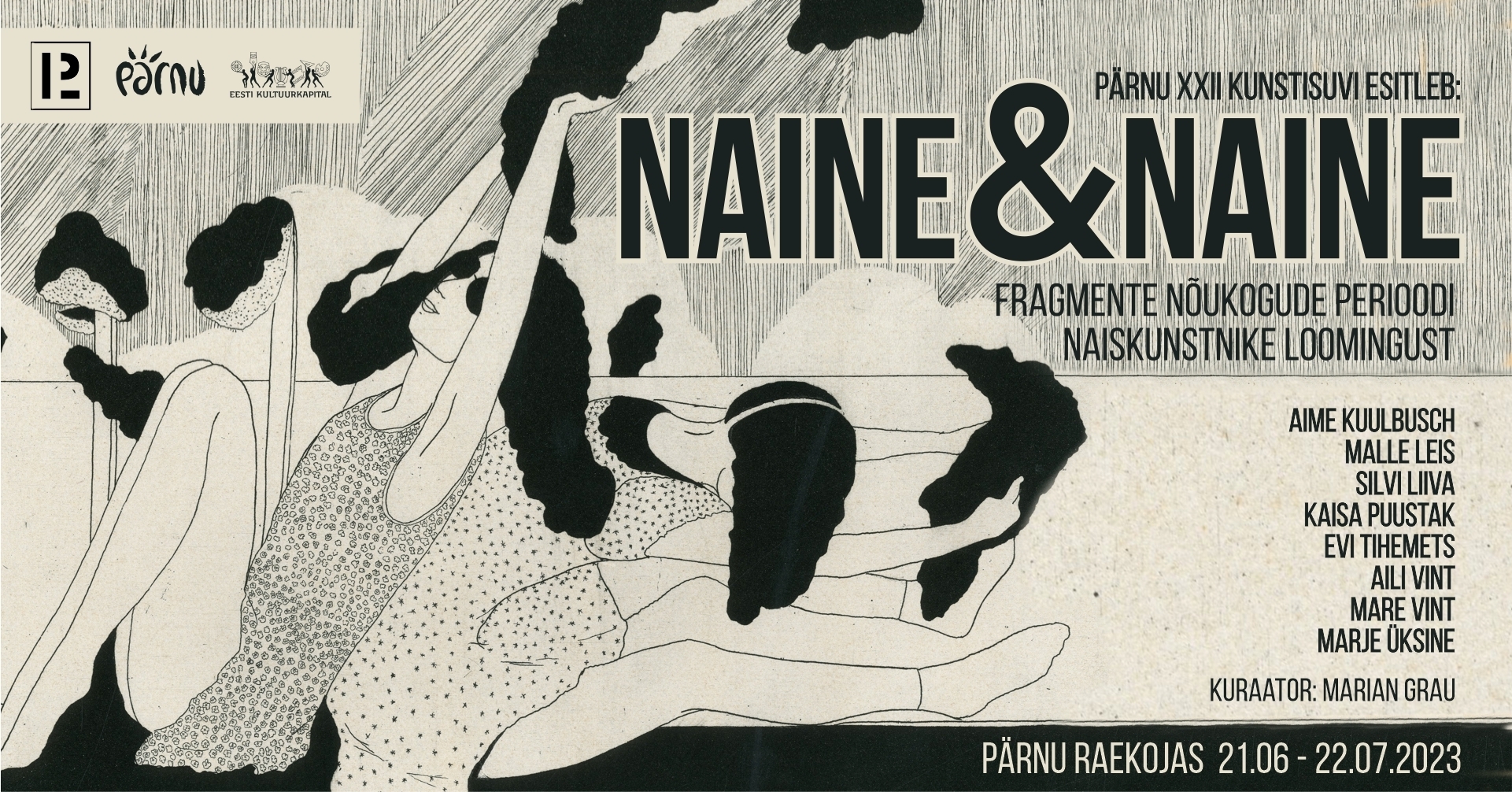The Pärnu Art Summer is a festival with great traditions. The first Art Summer was held in 1995 and since then many of the great figures in the Estonian art world have participated. Five years ago two new, and more international, exhibition series called Woman&Woman and Man&Man were created under the auspices of the Pärnu Art Summer. The curators, Marian and Jan Leo Grau, sought to combine the body and beach culture of the summer resort town with a legendary exhibition of nudes to create a format that would provide a broader scope of nude art and various points of view related to gender issues. Over the years, Man&Man and Woman&Woman have tried to deal with the positions of men and women in contemporary society. This year’s exhibitions follow a very different path. Man&Man takes a look at contemporary Spanish and French photographic art with which the works of two local artists, Peeter Allik and Valdek Lauri, enter into a dialogue. While Woman&Woman takes a look at the past, and presents a selection of works by the Estonian female artists of the 1970s-1980s.
WOMAN&WOMAN: Fragments from the Works of Female Artists from the Soviet Period
Participating artists: Aime Kuulbusch, Malle Leis, Silvi Liiva, Kaisa Puustak, Evi Tihemets, Aili Vint, Mare Vint, Marje Üksine
Curator: Marian Grau
The post-Stalinist decades of the Estonian art scene can be seen, on the one hand, as an era of prohibitions and demands, on the other, as one of the most important and revolutionary times for the renewal of artistic idioms. The exhibition mainly focuses on the 1970s and 1980s, when the local cultural world has been interpreted as a more liberal and free-spirited “Soviet West”. The proportion of female artists at that time was remarkably high, and therefore, it is difficult to underestimate their contribution to the changing art discourses.
During those decades, all the visual arts were renewed, and the realism-oriented rules related to painting, graphics and sculpture were reoriented. Although the artists participating in the exhibition were educated during the occupation, their works speak a language that differs completely from the official art dictated by Moscow.
Various graphic techniques were mixed and colours, as well as freer and more expressive lines, were added to the previously gloomy monochromatic world. In painting, the joyful enthusiasm of the hippie era was mixed with the modern techniques that leaked in from the West, i.e. more abstract painting styles were experimented with, and previous understandings of composition were given entirely new meanings.
The exhibition can also be seen as an attempt to focus on these forgotten decades, and along with pearls that are established classics, one can (re)discover several works that have yet to be introduced to the public at large. Among the creations by Mare Vint (nee Mänd) from the late 1960s, one can find, for example, psychedelic paintings, which are one of the most exciting and exceptional series by an artist who later went down in history as a graphic artist. These are complemented by early prints from the 1970s, which depict elements that are characteristic of closed systems, i.e. walls, gardens, fences. Malle Leis’s early collages, watercolours and serigraphs depict urban and natural landscapes, as well as people and objects, in a Pop style. Somewhat unexpectedly, one can also find political references in Leis’s early work. Evi Tihemets’ work is represented by both her more melancholic and harsher style, as well as her happier and more Pop style, which went hand in hand throughout the decades. As a very versatile artist, Tihemets could create abstract colour lithographs, drawing inspiration from the world of fantasy and literature, while also reflecting the desolate industrial landscapes of East-Viru County.
Many of Kaisa Puustak’s prints also feature industrial and urban scenes that play with geometry, in which a realistic approach has acquired an experimental and freer expression. Marje Üksine also created bold series prints in the 1970s, in which various techniques are mixed and we can see the movement of graphic art toward more abstract forms.
Silvi Liiva’s work from the 1970s focuses on people and their inner worlds and her early work is often associated with the unravelling of the subconscious and people’s deep emotional layers.
Another eloquent sign of the era are the female nudes by Aili Vint, which are stylised almost to the point of abstraction, and the ones by Aime Kuulbusch that resemble sculptural forms. After the harsh Stalinist period, nudes as a genre could be found in the art galleries again. However, they still had to be hidden from the eyes of Moscow during subsequent decades.
Exhibition opening: 21 June at 4 pm
Exhibition sponsors: Cultural Endowment of Estonia and Pärnu City Government




